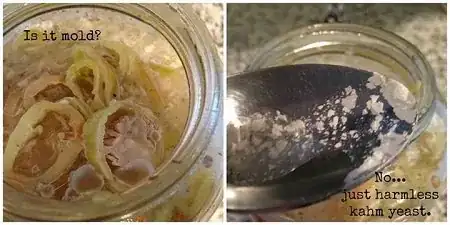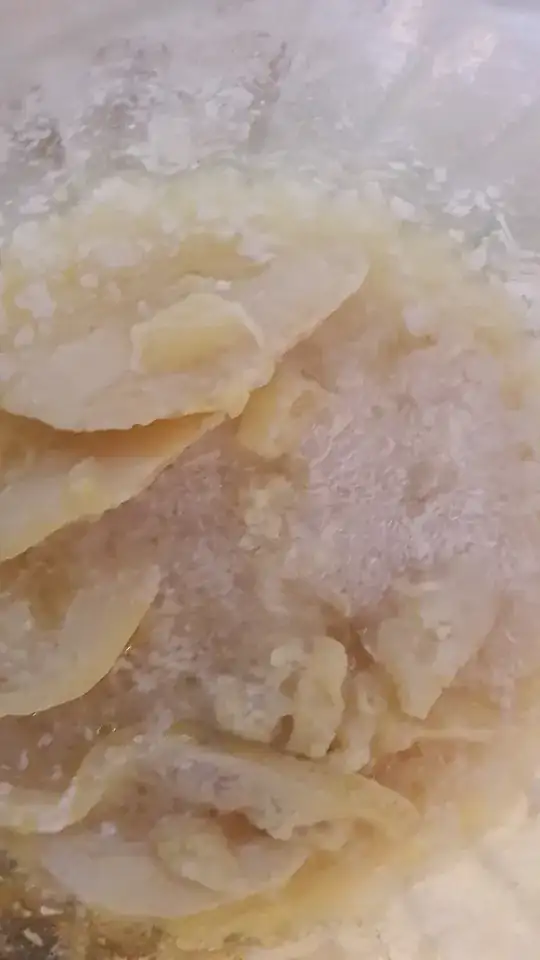Well, let's start from the top. You mentioned "Jam and Pickles," but these are actually two very different environments for the growth of things like molds and bacteria.
In terms of jams (but also mold on foods in general)
Some people have already mentioned that you might be seeing something other than mold. If it IS mold, the USDA recommendation is to chuck it due to potential mycotoxins.
The USDA actually has a lovely table drawn up of recommendations for what to keep and what to toss when you do see actual mold in your food.
Jams and Jellies
Discard
The mold could be producing a mycotoxin. Microbiologists recommend against scooping out the mold and using the remaining condiment.
Personally, I recommend following the USDA's guidelines on eating (or more generally, not eating) food with mold. This doesn't mean I always do so myself (often if it's just a very small spot, I get annoyed and end up carefully scooping it out, even knowing I shouldn't), but it's what I'd be comfortable recommending to someone else. Honestly there's enough other ways to get food poisoning that are risky but may be deemed worth pursuing for achieving something you can't really get without taking that risk (and, ideally, ways to help mitigate those risks, like deep freezing with sushi, etc); I'm not really sure trying to not throw away some jam is one of them.
Granted, the picture doesn't look like mold to me, and I would tend to agree with the other comments regarding the picture in question likely being pectin or crystallization but it's honestly hard for me to tell for sure from that particular image, personally.
Pickles: mold or… Kahm?!
Obviously, when talking about pickles, you shouldn't be seeing pectin on the surface. But what you might see with a pickling process that can sometimes be mistaken for mold is yeast! Kahm yeast, to be precise, is a somewhat common pickling issue when things don't quite go perfectly. If it is Kahm yeast, it's considered harmless.
Still, most places recommend scooping it out as much as possible (within reason) rather than mixing it back in. Not because it's going to hurt you, but because it will affect the flavor if you stir it back in.
So that seems to be another point against the "always just mix it back in!" myth, if we start from the assumption that it formed based mostly on the mistaken identity of things like Kahm that aren't actually mold.
So how can you tell if you have mold or yeast? (or both??)

image credit: Cultures for Health - White Film on Cultured Vegetables
Mold usually distinguishes itself by appearing "fuzzy" (growing up from the surface a bit with fuzzy tendrils) as well as growing tendrils into whatever it is growing on/in (often these are not very visible, depending on the stage of growth, which is another reason to throw certain things out when they get mold infested, because it will be more than just on the surface). Kahm yeast, on the other hand, is usually described as looking like a relatively flat coating (that may have bubbles or ridges formed under it due to the fermentation process). Kahm yeast is always translucent (depending on thickness) white to light cream in color. Thicker cultures of Kahm yeast may appear less "flat" and more rough, but the basic principle still applies: it's not "fuzzy" like mold.
I did actually find one interesting picture that shows the growth of some mold on top of a culture of Kahm.
If you actually do have mold growing on something
…and not just some part of your jam separating out or Kahm yeast growing on your pickles, then no, stirring it back in is about the last thing you would ever want to do. If the mold is creating mycotoxins, you've just mixed them back in to the rest of the jam. Even if you did manage to kill the mold, the laced food could still poison you: mycotoxins are toxic chemicals produced by the mold and won't go away simply because the mold itself is (or appears to be).
Also, you've now helped the mold spread, even if at first it appears to be gone from the mixing process. Where there's mold you CAN see, there's usually mold you can't see yet. This is part of the reason for the recommendation to cut an inch around any mold growth on foods that are generally considered to be safe to eat after the mold on them has been properly removed, like cheese.

